Wild karuka
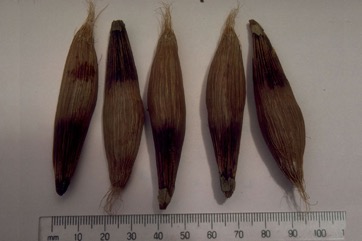
A tropical plant. The usual range is from 2500 to 3100 m altitude. Some are transplanted to lower altitudes.
Also known as:
Agia
Edible Portion
- Nuts, Seed
Where does Wild karuka grow?
Found in: Asia, Indonesia, Pacific, Papua New Guinea, PNG, SE Asia
Notes: There are about 600 Pandanus species. They grow in the tropics.
Status: In Papua New Guinea, an important wild harvested nut for people with land at the right altitude.
Growing Wild karuka
Cultivation: Trees are normally self sown but some are transplanted. Self sown plants are weeded, protected and owned. The wild karuka is disemminated throughout the high altitudinal forest as single widely spread trees and the dispersal agent is claimed to be marsupials (tree kangaroos etc). Some are transplanted to lower altitudes. The fruiting is seasonal and often a good season occurs every second year. Individual people within the clan are given permission to look after different sections or trees and these people clear the bush near the base of the tree and build traps to stop tree kangaroos.
Edible Uses: The kernel of the nuts is eaten. (Sometimes nuts are stored in the ground to soften the hard shell.)
Production: The fruiting is seasonal and often a good season occurs every second year.
Nutrition Info
per 100g edible portion| Edible Part | Energy (kcal) | Protein (g) | Iron (mg) | Vitamin A (ug) | Vitamin c (mg) | Zinc (mg) | % Water |
|---|---|---|---|---|---|---|---|
| Nuts | - | 8.5 | - | - | - | - | 10 |
Wild karuka Photos

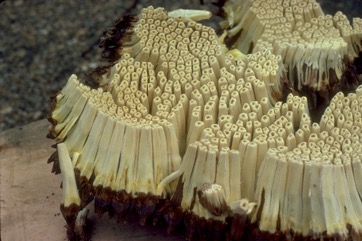
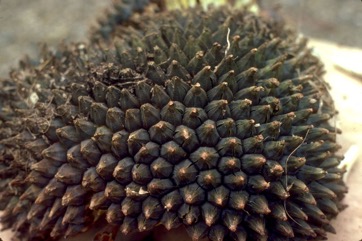
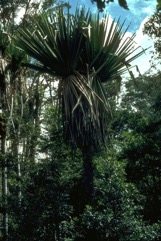
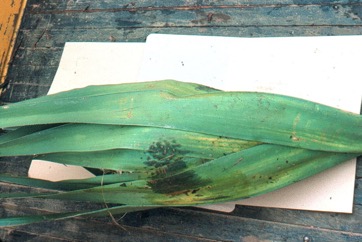
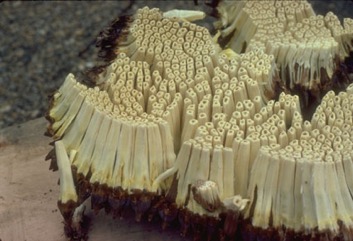
References
Bourke, M., 1995, Edible Indigenous Nuts in Papua New Guinea. In South Pacific Indigenous Nuts. ACIAR Proceedings No 69, Canberra. p 46
Bourke, R. M., Altitudinal limits of 230 economic crop species in Papua New Guinea. Terra australis 32.
Clarke, W.C. & Thaman, R.R., 1993, Agroforestry in the Pacific Islands: Systems for sustainability. United Nations University Press. New York. p 251
French, B.R., 1986, Food Plants of Papua New Guinea, A Compendium. Asia Pacific Science Foundation p 159
Massal, E. and Barrau, J., 1973, Food Plants of the South Sea Islands. SPC Technical Paper No 94. Nounea, New Caledonia. p 27
Hide, R. L., (Ed.) 1984, Research Report of the Simbu Land Use Project. Vol.V1 South Simbu: Studies in Demography, Nutrition, and Subsistence. p 441
PROSEA (Plant Resources of South East Asia) handbook, Volume 2, 1991, Edible fruits and nut. p 240
Purseglove, J.W., 1972, Tropical Crops. Monocotyledons. Longmans p 512
Sillitoe, P. 1995, An Ethnobotanical Account of the Plant Resources of the Wola Region, Southern Highlands Province, Papua New Guinea. J. Ethnobiol. 15(2): 201-235
Walter, A. & Sam C., 2002, Fruits of Oceania. ACIAR Monograph No. 85. Canberra. p 218, 281
Wickens, G.E., 1995, Edible Nuts. FAO Non-wood forest products. FAO, Rome. p172
World Checklist of Useful Plant Species 2020. Royal Botanic Gardens, Kew
www.pngplants.org